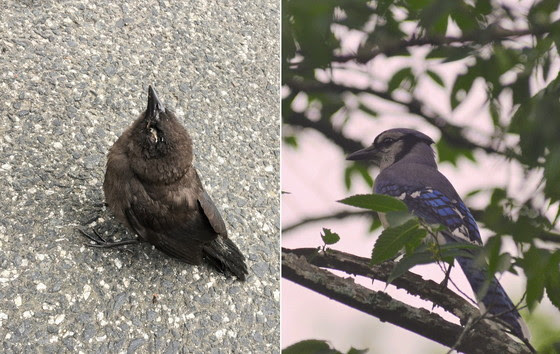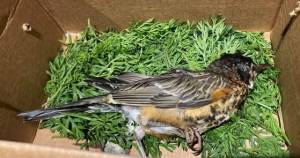
The Georgia Department of Natural Resources is asking people to keep an eye out for sick birds and giving information on what you can do to help if you see any:
A mysterious illness that is killing backyard birds across the Mid-Atlantic and in parts of the Southeast has not been documented in Georgia yet. But DNR is on the lookout. And you can help.
First, some background. Since late May, sick and dying birds with symptoms including swelling and crusty discharge around the eyes and neurological issues such as tremors and lack of balance have been found from New Jersey and Pennsylvania to Kentucky and Virginia.
Most of the affected birds documented have been fledgling blue jays, American robins, common grackles and European starlings. However, other species of songbirds have been reported.
Wildlife disease labs testing the birds have ruled out salmonella bacteria, several families of viruses and Trichomonas parasites. But the disease and its cause are still unknown.
No issues have been reported with human health or pets, livestock or poultry. This issue is not connected to the salmonella outbreaks and other disease flare-ups associated with the winter finch irruption that swarmed Georgia feeders with purple finches and pine siskins this spring.
Ailing backyard birds reported to DNR usually either involve salmonella (bacterial), aspergillosis (fungal), avian pox (viral) or mycoplasmal conjunctivitis (bacterial). Trichomoniasis, a protozoan parasite, is also a potential problem. These diseases and their spread have been associated with birds at feeders.
Characteristic symptoms of the latest outbreak can include swollen/crusty patches over eyes (sometimes with oozing discharge), tremors or seizures and a lack of balance, partial paralysis or similar neurological conditions. Affected birds also are often lethargic.
WHAT YOU CAN DO
People finding sick or dead birds in Georgia with these symptoms are encouraged to contact DNR wildlife biologist Todd Schneider (478-994-1438; todd.schneider@dnr.ga.gov).
At this point DNR is not recommending taking bird feeders down. If the disease is confirmed in Georgia, DNR will provide further guidance as needed.
The agency continues to strongly recommend that people regularly clean bird feeders and bird baths and maintain feeding areas.
- Clean feeders weekly using a 10-percent bleach solution (one part bleach to nine parts water). Then rinse the feeders thoroughly and let them air dry. Wear protective gloves while cleaning feeders, feeding areas and bird baths, and wash carefully afterward.
- Rake up bird seed, hulls and bird droppings beneath feeders two or more times a week. It is especially important that wet seed and hulls are promptly removed. Discard them in the trash.
- Empty and clean bird baths every two days when bird visitation is heavy.
- If you have multiple feeders, space them out to reduce gatherings of birds.
If you find sick or dead wild birds at feeders or in your yard:
- Avoid handling them unless necessary. If you do handle them, avoid direct contact by wearing disposable plastic/latex gloves, then wash thoroughly.
- Keep pets (including pet birds) away from sick or dead wild birds.
- Dispose of dead birds in a sealable plastic bag placed in a secured outdoor trash bin or bury them deeply. This will help prevent disease transmission to other birds and wildlife.
- Learn more about sick, injured or orphaned wildlife.

1 Comment
Leave a Reply
Cancel reply
Leave a Reply

Georgia News
Kemp Signs Historic Tax Cut Package Into Law

Bulloch Public Safety
Statesboro Police Dept Investigating Shooting at Vault Apartments, Two Arrested

Bulloch Public Safety
04/18/2024 Booking Report for Bulloch County

Chattooga Local News
Get Ready for the Buzz: Cicadas to Emerge

Bulloch Public Safety
03/25/2024 Booking Report for Bulloch County

Bulloch Public Safety
04/09/2024 Booking Report for Bulloch County

Bulloch Public Safety
04/01/2024 Booking Report for Bulloch County

Bulloch Public Safety
04/08/2024 Booking Report for Bulloch County

Bulloch Public Safety
04/15/2024 Booking Report for Bulloch County






Rod
July 21, 2021 at 8:04 pm
It is pretty obvious, 5G released and birds start mysteriously dying